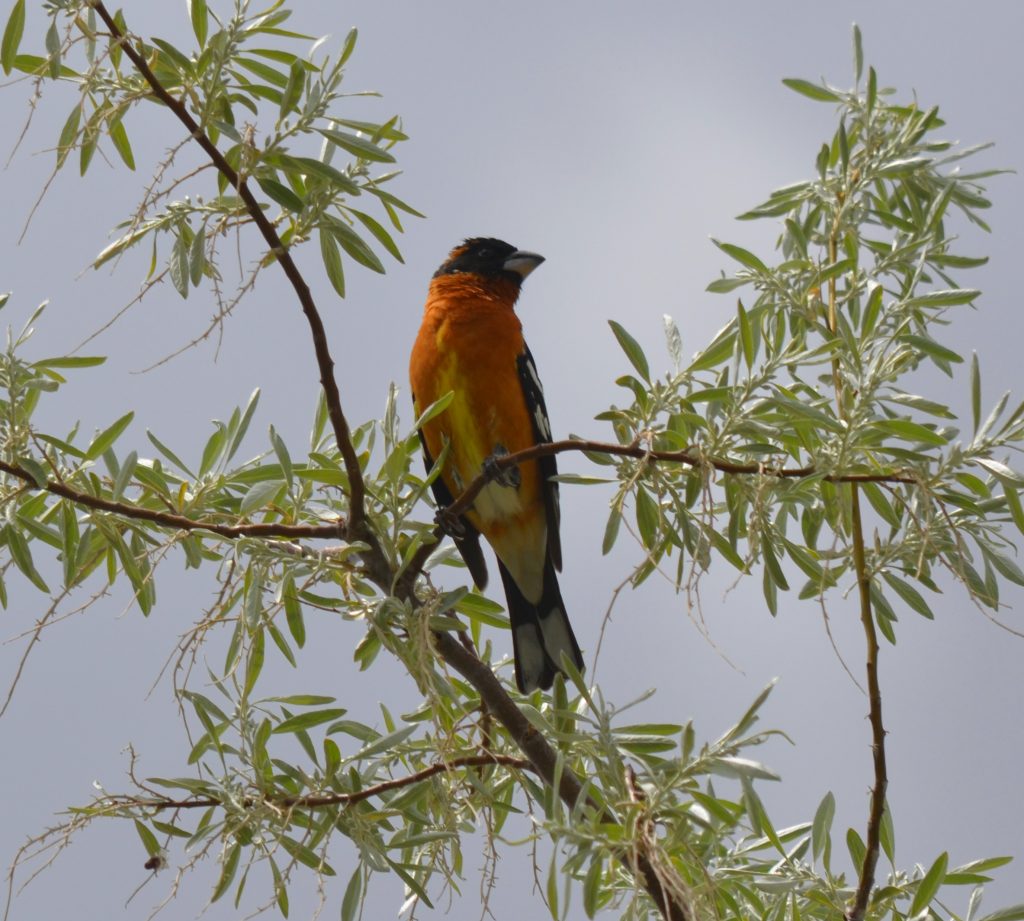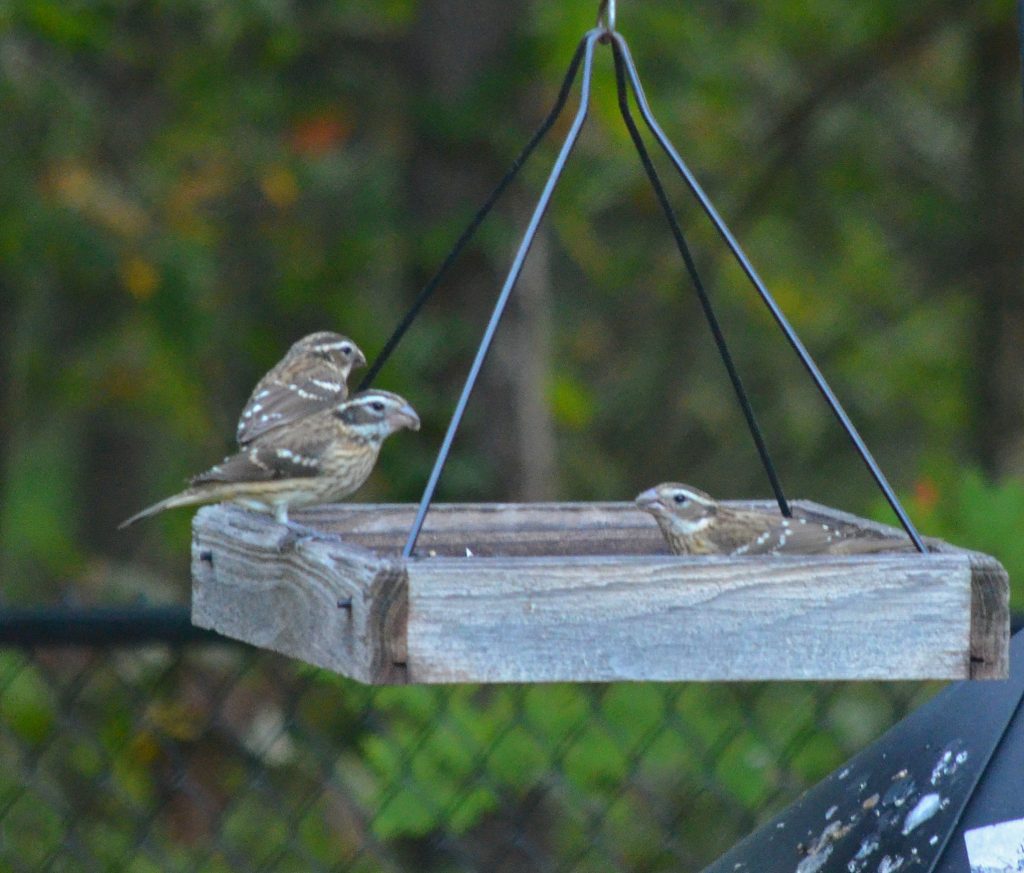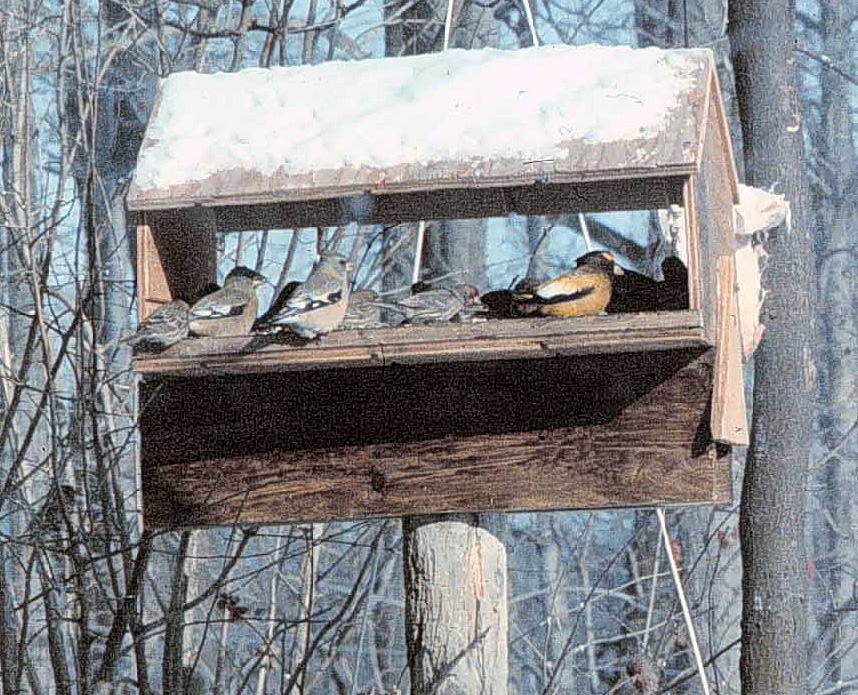One of my favorite groups of birds in North America is the grosbeaks. These robust, colorful, and sometimes, very musical birds, can be found from the west coast to the east coast, and from Canada to Mexico. Specific species may use a variety of habitats during breeding and migration. Common members include Rose-breasted Grosbeak, Evening Grosbeak, Blue Grosbeak, Black-headed Grosbeak, Pine Grosbeak and two Mexican species that rarely wander north into the southern U.S.-the Yellow Grosbeak and Crimson-collared Grosbeak.

GROSBEAKS get their name from the French grosbec, from “gros” meaning thick and “bec” meaning beak.
The beaks of these birds are adapted to eating seeds, including those of trees such as elms, as well as buds and flowers. In addition, they also eat a variety of insects, including beetles, caterpillars, grasshoppers and many others-spiders and snails are also a part of their diet. In the late summer and fall they may feed heavily on berries and small fruits. Young are fed mostly insects.



The most common breeding species where I live is the Rose-breasted Grosbeak. The males are a striking black and white color with a splash of red on their chest, usually in a V-shape. One gruesome folk nickname of this bird is “cutthroat.” The females are brown streaked with faint yellow wing linings. They’re usually found in deciduous forests, old fields and overgrown orchards. But as fall gives way to winter, another grosbeak may make a rare appearance!


Every winter I wait patiently, hoping to be invaded by one of the coolest of its kind, the Evening Grosbeak! Here in the east, these seed-eating machines will infrequently venture south from Canada in search of food, raiding backyard bird feeders like small swarms of locust. The males’ handsome gold, black and white markings make them one of the most popular winter time birds!

photo courtesy of Linnae Halvorsen Photography
When I was kid growing up in NE Pennsylvania in the 1970’s and early 80’s, every winter we would have hordes of Evening Grosbeaks drop in to gorge on our sunflower seeds. It wouldn’t be unusual to have flocks of 50+ drop in unexpected, feed ravenously, then quickly disappear. Unfortunately, in the last 20 years the population of Evening Grosbeaks has been declining throughout their range. Scientists believe the main reasons for their decline is due to habitat loss in their northern breeding forests and pesticides used to control spruce budworm, an important food source for them, and other northern bird species.

My birding year, and outdoor adventures, would not be complete if I didn’t get a chance to see at least one Grosbeak, every year…….and maybe, just maybe, when the cold winds blow down from Canada, I may get another look at those eye-catching winter visitors from the north! Enjoy the Outdoors!